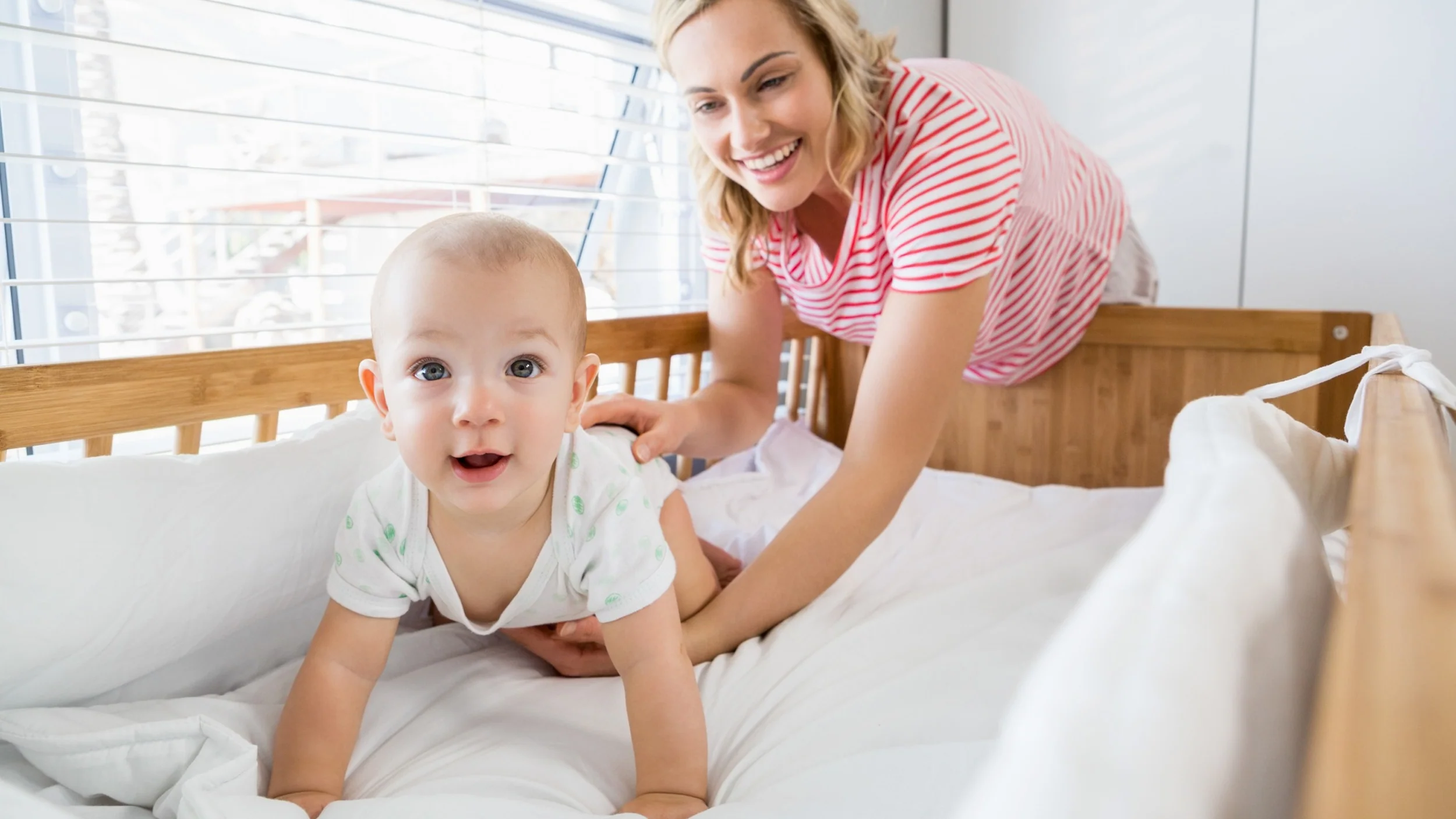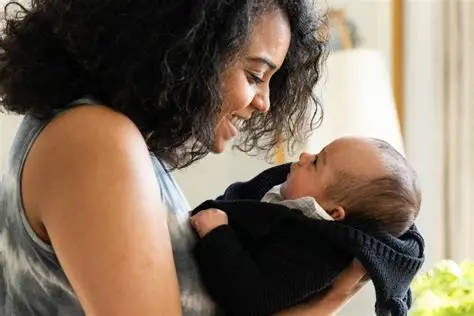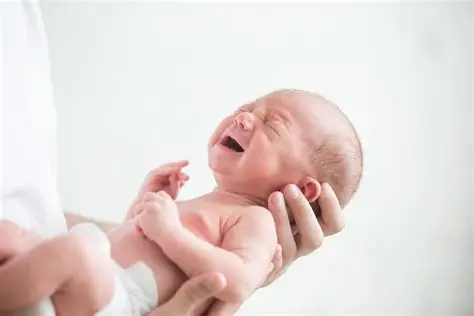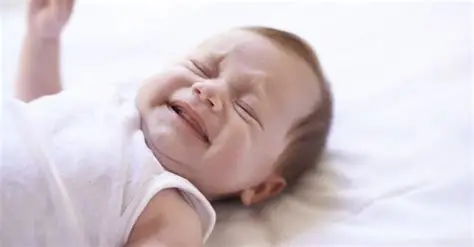Bringing a new baby home is an exciting time, filled with anticipation and preparation. Among the many items on your registry, the baby crib and crib mattress are arguably the most important. These are not just pieces of furniture; they are your baby’s primary sleep environment for the first few years of their life. Ensuring their safety is paramount, as a secure sleep space significantly reduces the risk of Sudden Infant Death Syndrome (SIDS) and other sleep-related injuries.
This guide provides a detailed, step-by-step approach to choosing a safe crib and mattress, incorporating the latest safety standards and expert recommendations. We’ll explore crucial features, explain what to avoid, and empower you to make an informed decision for your little one’s well-being.
Why Safety Matters: The Importance of a Safe Sleep Environment
The crib and mattress form the foundation of your baby’s sleep environment. The U.S. Consumer Product Safety Commission (CPSC) and the American Academy of Pediatrics (AAP) provide stringent guidelines to minimize risks associated with infant sleep. Historically, crib design flaws, such as the infamous drop-side cribs, led to tragic accidents, prompting significant regulatory changes. The CPSC banned drop-side cribs in 2011 due to numerous infant deaths and injuries from suffocation and entrapment. This ban underscores the critical need for parents to be vigilant about safety standards.
Understanding these standards and making informed choices can give parents immense peace of mind, knowing they have created the safest possible space for their baby to rest and grow.
Step 1: Prioritize Safety Certifications and Standards
When beginning your search, always look for cribs and mattresses that meet current safety standards. This is your first and most important filter.
Look for CPSC Compliance
- Federal Regulations: In the United States, all new cribs manufactured and sold must comply with the CPSC’s mandatory safety standards (16 CFR Part 1219 for full-size cribs and 16 CFR Part 1220 for non-full-size cribs). These regulations cover everything from structural integrity and hardware to slat spacing and mattress support.
- No Drop-Side Cribs: As mentioned, drop-side cribs are illegal to manufacture, sell, or even resell in the U.S. Avoid any crib with a movable side rail, regardless of how “good” it looks.
Seek JPMA Certification (Optional but Recommended)
- JPMA Certification: The Juvenile Products Manufacturers Association (JPMA) offers a voluntary certification program. A JPMA-certified crib or mattress means it has been sample-tested by an independent, CPSC-accredited laboratory to meet federal regulations, voluntary ASTM standards, and additional retailer requirements. While not legally required, the JPMA seal provides an extra layer of assurance and peace of mind.
Step 2: Inspect the Crib’s Structure and Design
Once you’ve confirmed compliance with safety standards, it’s time to examine the physical aspects of the crib.
Slat Spacing
- Rule of Thumb: The distance between crib slats is a critical safety feature. It must be no more than 2 3/8 inches (approximately 6 centimeters) apart. This is roughly the width of a soda can.
- Why it Matters: This strict measurement prevents a baby’s head or body from becoming entrapped between the slats, a leading cause of strangulation and suffocation.
Corner Posts
- Flush or Very Tall: If the crib has corner posts, they must be either completely flush with the top of the headboard and footboard, or they must be very tall – over 16 inches (41 centimeters).
- Avoid In-Between Heights: Corner posts of intermediate heights (between flush and 16 inches tall) can snag a baby’s clothing, leading to strangulation hazards.
Headboard and Footboard
- No Cutouts: The headboard and footboard should be solid, without any decorative cutouts that could trap a baby’s head or limbs.
- Smooth Surfaces: Ensure all surfaces are smooth, free of splinters, sharp edges, or points. Finishes should be non-toxic and lead-free (a standard for all new cribs since 1978).
Hardware and Construction
- Sturdy Assembly: The crib should be sturdy and well-constructed. Check for any loose parts, bolts, screws, or hardware.
- Regular Checks: Even after assembly, regularly check and tighten all screws and hardware.
- Original Parts: If any parts need replacement, always use manufacturer-provided parts. Never substitute hardware.
- Assembly Manual: Ensure you receive and follow the assembly manual precisely. Incorrect assembly can compromise the crib’s safety.
Adjustable Mattress Height
- Multiple Settings: Most modern cribs offer multiple mattress height settings.
- Highest Setting for Newborns: For newborns, the mattress should be at its highest setting for easy access.
- Lower as Baby Grows: As your baby grows and becomes more mobile (can sit up, push up on hands and knees, or stand), lower the mattress to prevent them from climbing or falling out. The lowest setting is required once your baby can stand.
Step 3: Select a Safe Crib Mattress
The mattress is as important as the crib itself in ensuring a safe sleep environment.
Firmness is Key
- Crucially Firm: The crib mattress must be firm. This is perhaps the most important safety factor for a crib mattress. Soft mattresses can conform to a baby‘s head, creating indentations that pose a suffocation risk by obstructing breathing or leading to rebreathing of exhaled air.
- How to Test: To test firmness, press down on the center and edges of the mattress. It should quickly spring back to its original shape without leaving an indentation. Don’t rely solely on “firm” labels; perform your own test.
Snug Fit
- No Gaps: The mattress must fit snugly inside the crib. There should be no gaps larger than two fingers (or approximately 1 inch / 3 cm) between the mattress and the crib sides.
- Why it Matters: Gaps, even small ones, can create entrapment hazards where a baby’s arm, leg, or head could get stuck, leading to injury or suffocation.
- Standard Dimensions: For full-size cribs, the standard mattress dimensions are typically 27 1/4 inches by 51 5/8 inches, with a thickness of no more than 6 inches. Standard cribs usually have interior dimensions of 28 inches by 52 3/8 inches. This standardization allows for mix-and-match, but always check for a snug fit.
- Non-Standard Cribs: If you have a mini crib, travel crib, or bassinet, their mattress dimensions are not standardized. In these cases, it is crucial to use only the mattress that came with the product. Do not substitute it.
Mattress Material
- Venting: Look for mattresses with proper ventilation holes to allow airflow and prevent moisture buildup, which can lead to mold or mildew.
- Waterproof Cover: Many crib mattresses come with a built-in waterproof cover, or you can purchase a separate, tightly fitting waterproof mattress protector. This protects the mattress from spills and accidents and makes cleaning easier.
Step 4: Understand What NOT to Put in the Crib
Even the safest crib and mattress can become hazardous if cluttered with unsafe items.
- Bare is Best: The AAP’s “Bare is Best” recommendation is critical. The crib should be free of anything that could pose a suffocation or strangulation risk.
- No Soft Bedding: Absolutely no pillows, quilts, comforters, loose blankets, sheepskins, or pillow-like bumper pads should be in the crib.
- No Stuffed Animals or Toys: Keep all stuffed animals and soft toys out of the crib.
- No Sleep Positioners or Wedges: These products are not recommended and can be dangerous.
- Use Fitted Sheets Only: Only use a fitted bottom sheet designed specifically for a crib mattress of the same size. Loose or baggy sheets are unsafe.
- No Crib Bumpers: Traditional, padded crib bumpers are banned due to suffocation and strangulation risks.
- Avoid Cords and Wires: Never place a crib near windows with blinds or curtain cords, or near baby monitor cords, as they pose a strangulation hazard.
Step 5: Consider Used or Hand-Me-Down Cribs with Extreme Caution
While tempting to save money, using a secondhand crib carries significant risks.
- Avoid Cribs Older Than 10 Years: Cribs manufactured before 2011 (when the CPSC’s stricter standards and the drop-side ban went into effect) are generally unsafe.
- Check for Recalls: Always check the CPSC website (CPSC.gov) for any product recalls before using a crib, new or old.
- Inspect Thoroughly: If you do consider a used crib that meets current standards (e.g., manufactured after 2011 and fixed-side), inspect it meticulously for:
- Missing, loose, or broken hardware.
- Cracked or broken slats.
- Sharp edges, splinters, or peeling paint.
- Evidence of modifications or repairs using non-original parts.
- Never Accept a Drop-Side: Reiterating, never use or accept a drop-side crib.
Final Considerations for a Safe Sleep Space
- Location: Place the crib in a safe location, away from windows (to avoid cords and drafts), heaters, lamps, wall hangings, and electrical outlets.
- Room Sharing: The AAP recommends room-sharing (baby sleeping in the same room as the parents, but in a separate crib or bassinet) for at least the first 6 months, and ideally for a year, as it can reduce the risk of SIDS.
- Back to Sleep: Always place your baby on their back to sleep for every nap and nighttime sleep.
- Monitor Crib Condition: Regularly check the crib for any wear and tear, loose hardware, or damage as your baby grows.
Choosing the right safe baby crib and mattress is an investment in your baby’s safety and your peace of mind. By adhering to these guidelines, you can create a secure and nurturing sleep environment that supports healthy development from day one.
Frequently Asked Questions (FAQ)
Q1: What is the most important safety feature of a baby crib?
The most important safety feature of a baby crib is that it meets current CPSC safety standards. This includes having fixed sides (no drop-side cribs), crib slats spaced no more than 2 3/8 inches apart, and a firm, snugly fitting mattress with no gaps larger than two fingers between the mattress and crib sides.
Q2: Can I use a hand-me-down or secondhand crib?
Using a secondhand crib is generally discouraged unless you can confirm it was manufactured after June 2011 (when stricter CPSC standards and the drop-side crib ban took effect) and it is in excellent condition with all original parts. Always check for recalls on the CPSC website and ensure no parts are broken, missing, or have been modified.
Q3: How do I know if a crib mattress is firm enough?
To check the crib mattress firmness, press your hand firmly down on the center and edges of the mattress. It should quickly spring back without leaving an indentation. A mattress that conforms to your hand’s shape is too soft and poses a suffocation risk for infants.
Q4: Why are crib bumpers not recommended?
Crib bumpers, whether padded or mesh, are not recommended and padded ones are banned due to significant safety concerns. They pose a risk of suffocation if a baby’s face gets pressed against them, and entanglement or strangulation if ties come loose. The safest crib is one with only a fitted sheet.
Q5: What should I do if I find a gap between the mattress and the crib?
If you find a gap larger than two fingers (about 1 inch or 3 cm) between the crib mattress and the crib frame, the mattress is not a safe fit. This gap creates an entrapment hazard. You should ensure your mattress matches the crib’s standard dimensions or, if it’s a non-standard crib, use only the mattress specifically provided by the manufacturer for that model.





